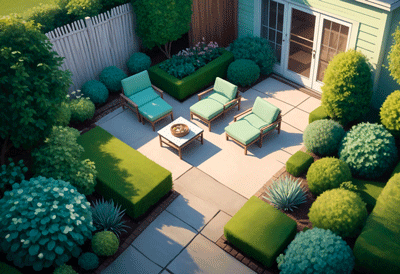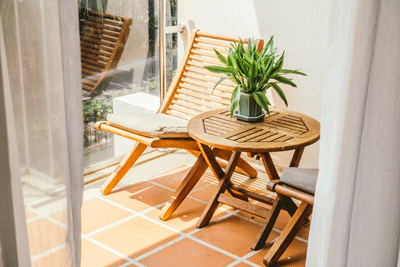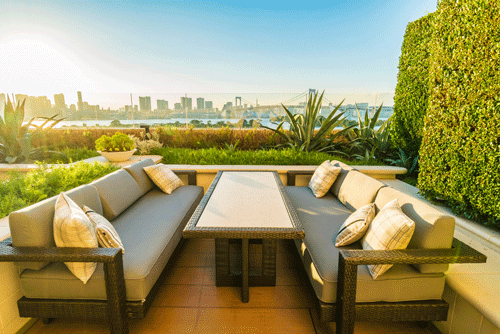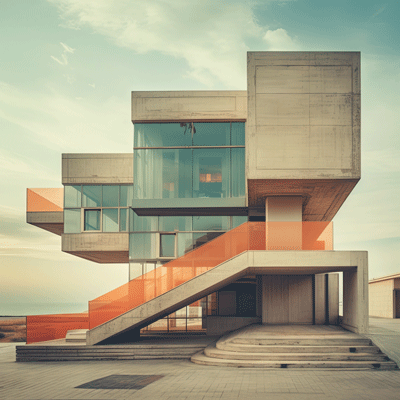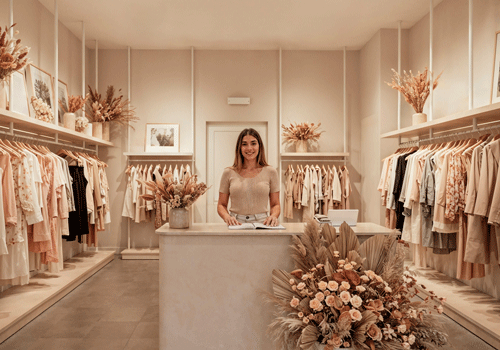
Interior & Exterior Design
Bathroom Design & Decoration
Essential Tips for Designing a Beautiful and Functional Bathroom
A well-designed bathroom combines practicality with personal style to create a space that is both a functional utility and a private retreat.
1. Master the Layout and Planning
Understand the “Bathroom Zones”: A bathroom is typically divided into three zones:
The Shower/Bath Zone: The wet area.
The Vanity/Sink Zone: The grooming and washing area.
The Toilet Zone: A more private area.
Plan these zones for clear circulation and logical use.
Clearance and Space: Ensure there is enough space to move comfortably.
Leave at least 21 inches (53 cm) of clear space in front of the toilet, shower, and vanity.
For a walk-in shower, a minimum of 36×36 inches (90×90 cm) is recommended.
The Wet/Dry Divide: Plan the layout to keep the “dry” areas (like towel storage and the toilet) away from direct water splash from the shower or tub.
2. Prioritize Safety and Function
Slip-Resistant Flooring: This is non-negotiable. Choose textured tiles, matte finishes, or smaller tiles with more grout lines for better grip. Porcelain and ceramic tiles are excellent choices.
Proper Ventilation: An exhaust fan is essential to prevent mold, mildew, and moisture damage. Ensure it is vented to the outside and has adequate power (CFM) for your bathroom’s size. A timer switch is a great addition.
Grab Bars: Modern grab bars are stylish and no longer look clinical. Install them in the shower and near the toilet for safety for all ages. Ensure they are securely anchored to wall studs or blocking.
Faucet and Valve Placement: Place shower controls and the showerhead so they are easy to reach before entering the water stream, preventing cold shocks.
3. Choose Durable and Suitable Materials
Bathroom materials must withstand constant moisture, humidity, and temperature changes.
Wall and Floor Tiles:
Porcelain/Ceramic Tiles: The top choice for their water resistance and durability.
Natural Stone (Marble, Slate): Beautiful but requires sealing and can be slippery. Best for walls or low-moisture powder rooms.
Large-Format Tiles: Have fewer grout lines, making them easier to clean and creating a more seamless look.
Vanity and Countertops:
Vanity: Look for materials that resist water damage, like marine-grade plywood or solid wood with a good sealant. Consider a floating vanity to make the floor easier to clean and create a sense of space.
Countertops: Quartz is a top choice as it’s non-porous and durable. Solid surface materials and granite (when sealed) are also good options.
Grout and Sealant: Use high-quality, mold-resistant grout and silicone sealant. Re-caulk as needed to maintain the waterproof barrier.
4. Optimize Storage and Organization
A clutter-free bathroom feels larger and more serene.
Vanity Storage: Choose a vanity with drawers and shelves. Deep drawers are better for storing hair dryers and bulkier items than doors with shelves.
Medicine Cabinet: A recessed or wall-mounted medicine cabinet provides invaluable storage for toiletries and first-aid supplies without taking up floor space.
Open Shelving/Niches: A recessed shower niche is essential for keeping shampoo bottles off the floor. Open shelving above the toilet or on empty walls can be both decorative and functional.
Vertical Space: Use the back of the door for hooks or towels. Install tall, narrow cabinets or ladder shelves to utilize vertical space.
5. Layer the Lighting
Proper lighting is crucial for both function and ambiance.
Task Lighting: This is the most important layer. Place vanity lighting on both sides of the mirror (vertical sconces) to cast even light on your face and eliminate shadows. Avoid a single overhead light above the mirror.
Ambient Lighting: Provides general illumination for the whole room. This can be from a central ceiling fixture (like a dimmable flush-mount or small chandelier) or recessed lights.
Accent Lighting: Adds drama and warmth. Consider LED strip lighting under the vanity, inside a shower niche, or along a toe-kick.
Dimmers: Install dimmer switches for all lighting to transition from bright, functional light in the morning to a soft, relaxing glow for an evening bath.
6. Focus on Fixtures and Finishes
The Shower: A rainfall showerhead is luxurious, but a handheld showerhead is incredibly practical for cleaning the shower and bathing children or pets. Consider a thermostatic valve to maintain a constant water temperature.
The Vanity: Choose a height that is comfortable for you. Standard is 32-34 inches, but 36-inch vanities are becoming popular for a more comfortable, back-friendly posture.
Faucet and Hardware: Choose a finish that you love and is easy to clean (e.g., brushed nickel, matte black). Ensure the style of your faucets, shower fixtures, and cabinet hardware is consistent.
7. Add Personality and Comfort
Color Palette: Light colors (whites, off-whites, light grays, soft blues) make a small space feel larger and more airy. Use darker or bolder colors in accessories, towels, or a single accent wall.
Heated Floors: This is the ultimate luxury that adds significant comfort, especially in colder climates. Electric under-tile heating systems are efficient and can be retrofitted.
Accessories: High-quality, fluffy towels, a stylish mirror, and a piece of art can elevate the space. Even a small plant (real or high-quality faux) can add life.
Mirror: Choose a mirror that complements the style of your vanity and lighting. An anti-fog feature is a wonderful modern convenience.
Common Bathroom Design Mistakes to Avoid
Poor Ventilation: This is the number one cause of mold and mildew problems.
Insufficient Lighting: Relying on a single, dim ceiling light over the sink.
Ignoring Storage: Not planning for where toiletries, towels, and cleaning supplies will go.
Slippery Floors: Choosing a glossy, smooth tile for the main floor area.
Trend Overload: While it’s fine to incorporate trends, choose timeless elements for expensive items like tiles and fixtures, and use trends in easier-to-change accessories.
Remember, a successful bathroom design balances aesthetics with the practical demands of a wet, high-traffic environment. It should be a space that feels clean, safe, and uniquely refreshing to you.


